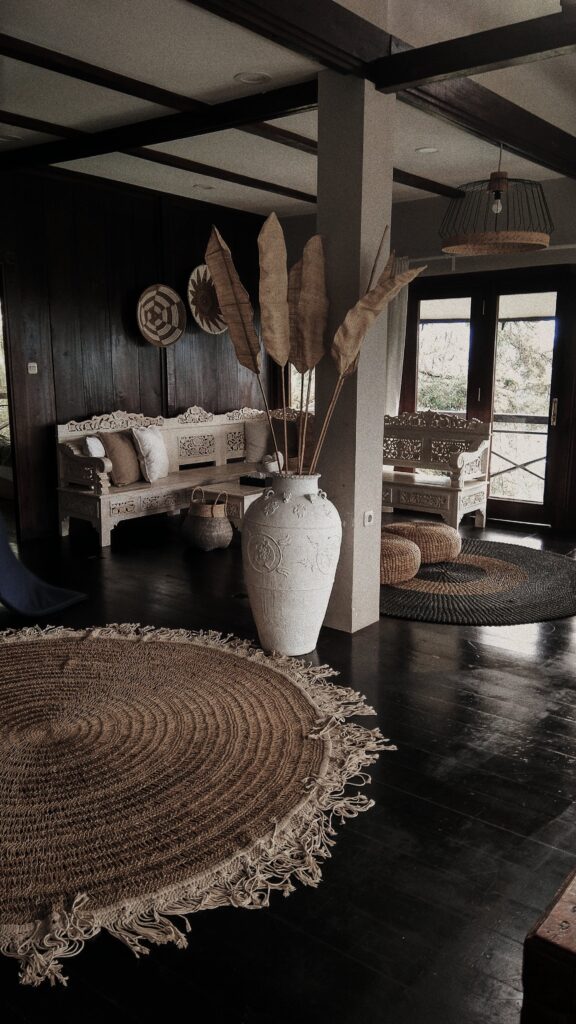When it comes to renovating or refreshing your living space, choosing the right flooring for your living room can be a pivotal decision. The living room, after all, is the heart of the home—a place for relaxation, entertainment, and making memories with loved ones. The floor underfoot sets the tone for the room’s ambiance and withstands the brunt of daily activities, making it crucial to select a material that not only looks appealing but also suits your lifestyle and needs. Let’s walk through the key factors to consider when deciding on the best flooring option for your living room, ensuring your choice marries form with function beautifully.
Contents
1. Consider Your Lifestyle
First and foremost, think about how you use your living room. Is it a high-traffic area bustling with kids and pets, or a serene retreat for quiet evenings? The level of wear and tear your living room floor will endure is a critical consideration. Durable materials like hardwood or laminate are excellent for busy households, while plush carpeting might be suitable for spaces less prone to spills and stains.
2. Assess Your Aesthetic Preferences
Your living room flooring should reflect your personal style and seamlessly integrate with the overall design theme of your home. Do you lean towards a warm, rustic look, or are you more inclined towards a sleek, modern aesthetic? Hardwood offers timeless appeal, tiles provide elegance and versatility, while carpets can add warmth and comfort. Consider the room’s color scheme, furniture, and decor to ensure your flooring complements your design vision.
3. Budget Considerations
Flooring can be a significant investment, and prices vary widely based on the material, quality, and installation costs. Setting a realistic budget early on can help narrow down your options. Remember, the most expensive option isn’t always the best fit for every home. Sometimes, alternatives like laminate or vinyl can mimic the look of more costly materials at a fraction of the price.
4. Evaluate Maintenance and Durability
Some flooring options require more maintenance than others to keep them looking their best. Hardwood floors might need refinishing over time, while tiles could require resealing of grout lines. If low maintenance is a priority, consider materials like laminate or vinyl, which offer durability and ease of cleaning. Think about your willingness to commit to the upkeep of the flooring you choose.
5. Think About Comfort and Insulation
Your living room is a place to relax, so comfort underfoot is an important factor. Carpets and cork floors offer a soft landing and can retain warmth, making them cozy options for colder climates. If you’re in a warmer region or prefer the look of hard flooring, consider adding area rugs to bring warmth and texture to the space without compromising on style.
6. Consider the Room’s Size and Lighting
The color and texture of your flooring can influence the perception of space and light in your living room. Lighter floors can make a small room feel more spacious and airy, while darker shades create a cozy, intimate vibe. Reflective surfaces like polished concrete or high-gloss tiles can maximize natural light, brightening up the space.
7. Sustainability and Health Impacts
More homeowners are considering the environmental impact and health implications of their flooring choices. Sustainable materials like bamboo, cork, and reclaimed wood are eco-friendly options that add natural beauty to your living room. Additionally, if indoor air quality is a concern, look for low-VOC (volatile organic compounds) options in flooring and adhesives to ensure a healthier living environment.
8. Future Resale Value
While your primary concern might be how the flooring looks and feels today, it’s wise to consider its impact on your home’s future resale value. Timeless materials like hardwood tend to appeal to a broad range of buyers and can increase your home’s market value. However, unique or high-quality installations in any material can also be a selling point, provided they’re well-maintained.
Making the Decision
After considering these factors, how do you make the final decision? Gathering samples of your top choices can be incredibly helpful. Place them in your living room to see how they look under different lighting conditions and against your furniture. It’s also beneficial to visit showrooms or homes with the flooring installed to get a better sense of how it feels and performs in a real-life setting.
Choosing the right flooring for your living room is a decision that marries practical considerations with personal style. By reflecting on your lifestyle, aesthetic preferences, and the practical aspects of maintenance, comfort, and budget, you can select a flooring option that enhances your living space for years to come. Remember, the perfect living room flooring is not just about the material itself but about creating a foundation that brings your vision of home to life. Happy flooring hunting!

